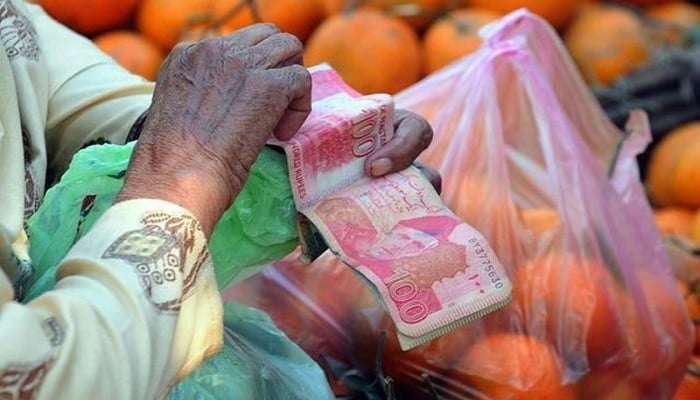Why the government must continue Ehsaas Rashan programme
Ehsaas Rashan Riayat programme established infrastructure to deliver government subsidies directly to millions of deserving households
July 15, 2022

Each year, Pakistan spends billions of rupees in untargeted federal and provincial subsidies across sectors. Much of these government transfers are subject to elite capture, subsidising producers, corporations, and middlemen instead of reaching the poorest households.
Earlier this year, Ehsaas sought to address this issue by launching the first-of-its-kind, end-to-end-digitized targeted commodity subsidy programme, called Ehsaas Rashan Riayat. The programme established infrastructure to deliver government subsidies directly to millions of deserving households.
Within the first five months, the programme saw an overwhelming response and received more than 40 million registrations from beneficiaries. To process these, we set up a robust beneficiary verification pipeline through which more than four million families have already been declared eligible.
Unfortunately, the current government has decided to end the programme as of July 1, 2022, and instead committed Rs16 billion in untargeted subsidy to be disbursed through Utility Stores. Utility Stores are meant to provide subsidised ‘rashan’ without any digital targeting or verification. This will open avenues for collusion and elite capture. Given fiscal constraints and double-digit inflation, which is placing a disproportionate burden on the poor, I would urge the federal government to reconsider its decision and use the Ehsaas Rashan Riayat mechanism, instead.
Ehsaas Rashan Riayat was launched after extensive stakeholder consultations and has several features, which can be a gamechanger to target support to poor households while minimising likelihood of corruption or elite capture. To make sure that public money is targeted, the programme created objective criteria for beneficiary eligibility, based on socioeconomic conditions drawing on data infrastructure of the 2021 National Socioeconomic Registry.
The backbone of the programme is the nationwide network of kiryana, Utility, and CSD stores, which were leveraged for disbursing the subsidy, instead of creating new distribution channels. Through an extensive process of engagement with merchant unions, visits to multiple cities, social mobilization, and grassroots awareness campaigns, the programme achieved a retail outlet footprint in 84 per cent of districts across Pakistan, to develop a network of 15,000+ merchants. This helped us reach the poorest families by mobilizing distribution channels wherever they lived. The plan was to reach more than 50,000 merchants by the end of the 2022 calendar year.
A key feature of the programme was to digitise the entire network of participating stores. These stores were linked in real-time through a mobile app of the National Bank of Pakistan, which was used to conduct subsidy transactions, with the subsidy given as a digital voucher. This programme enabled small, often informal kiryana stores to become more technologically savvy. Additionally, by connecting these merchants in an online database and geotagging them, the programme started digitally documenting a previously undocumented part of the economy.
The programme improved financial inclusion for thousands of unbanked small merchants by facilitating the opening of bank accounts. These merchants were reimbursed for the subsidy disbursed, in near real-time, through an entirely digital payment mechanism. These small merchants were to get access to banking services, including saving, transacting, and using other financial instruments, which could help further scale their businesses.
To conduct transactions, an eligible beneficiary had to visit an Ehsaas Rashan Riayat listed merchant or Utility Store. Upon keying in CNIC and commodity purchase details, the mPOS, which was linked to several databases, checked beneficiary eligibility, duplication within family and subsidy availability in real time. An SMS-based OTP prompt, which was used to prevent fraud, was needed to complete the transaction. The merchant disbursed the subsidy, and the subsidy amount was credited into the account of the merchant in 24 hours along with an eight per cent commission. The merchant had visibility of all transactions on the mPOS itself.
Ehsaas Rashan Riayat was also meant to provide an ecosystem where cash recipients of Ehsaas benefits could potentially transition into digital payment practices, thus eliminating pilferage and interplay of extractive middlemen.
The underlying digital ecosystem that was set up as part of this programme was agile and had immense potential to be scaled even further. Initially, we used a demand-based model in which people had to SMS a request. The next model was based on pre-qualification of all the eligible beta families, developing pools of CNICs and corresponding registered SIMS for each eligible beta family, allowing any family member to visit their nearest merchant with their phone and CNIC to avail of the subsidy, without the need to register or wait weeks for verification. Just before I left office, I convened a steering committee meeting to approve detailed modalities of the new registration model.
If the programme is continued, its infrastructure could also be utilized to expand the range of subsidized commodities. Other household food essentials – beyond wheat, pulses, and cooking oil – could be added with minor backend changes in the program’s infrastructure. The monthly subsidy amount can be increased. The plan was to use the system beyond groceries, for subsidies on fuel and outpatient healthcare assistance, which is not covered by health insurance.
Our country faces economically challenging times, where drastic measures will be needed to address the far-reaching effects of the rising fiscal deficit. Ehsaas Rashan Riayat provides an opportunity for the government to take the lead in exercising fiscal prudence and to phase out untargeted subsidies, in favour of targeted support to households that need it most while at the same time address corruption.
The government must reconsider its decision and continue the operation and expansion of Ehsaas Rashan Riayat in the public interest.
The writer is a former SAPM and former chairperson BISP. She tweets @Sanianishtar











